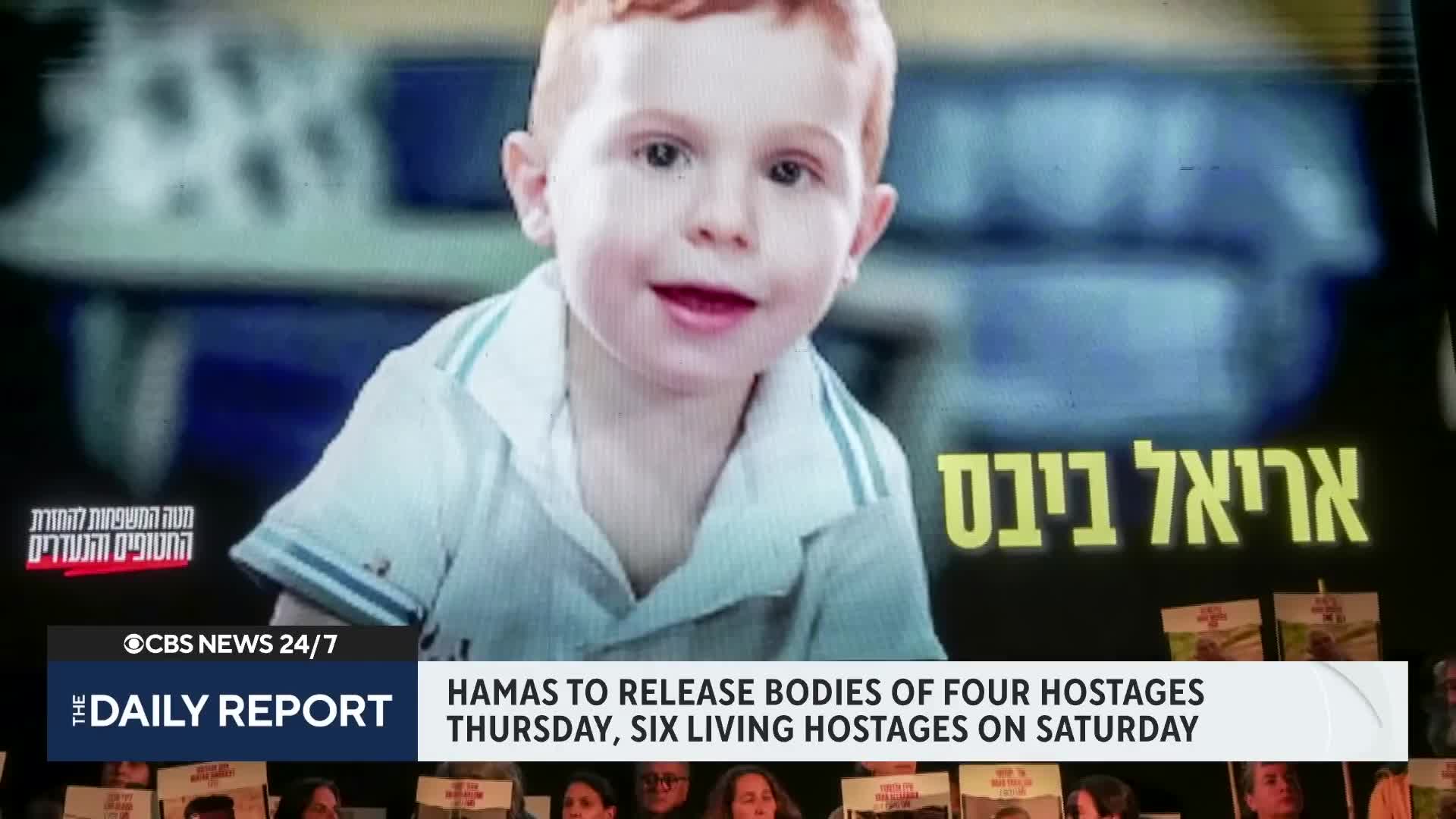Hamas
What is Hamas hoping to achieve with its flexibility in the Gaza ceasefire talks?
Hamas is demonstrating flexibility in ceasefire negotiations to pressure Israel into fulfilling its commitments under the agreement. Specifically, Hamas hopes mediators will compel Israel to allow mobile homes, tents, and heavy equipment into Gaza, addressing the humanitarian crisis. Meanwhile, families of Israeli captives continue to pressure Prime Minister Benjamin Netanyahu to negotiate a comprehensive deal that would secure the release of all remaining hostages. This dual pressure strategy aims to advance both humanitarian aid access and captive exchange objectives.
Watch clip answer (00:25m)What is the current status of the Gaza ceasefire negotiations?
Hamas has agreed to release six living Israeli captives, including Hisham El Sayed and Avira Mengestu who were captured in 2014-2015 after infiltrating Gaza's borders. Additionally, 47 Palestinian prisoners are scheduled for release as part of the exchange. Hamas is demonstrating flexibility to pressure Israel to fulfill its end of the ceasefire agreement, specifically allowing mobile homes, tents, and equipment into Gaza. Meanwhile, families of Israeli captives continue pressuring Prime Minister Netanyahu to reach a comprehensive deal that would secure the return of all remaining hostages.
Watch clip answer (01:12m)Why is the potential ceasefire agreement with Hamas considered contentious?
The potential ceasefire agreement is highly contentious because it would require a full Israeli withdrawal from the Gaza Strip. According to BBC Correspondent Mark Loewen, this withdrawal is 'bitterly opposed by the far right of Benjamin Netanyahu's government.' The withdrawal represents a major concession that has created significant political tension within Israel's coalition government. This phase of negotiations is particularly sensitive as it balances the humanitarian goal of releasing hostages against strategic military positions in Gaza that hardline elements consider essential to Israel's security interests.
Watch clip answer (00:09m)What has Hamas revealed about the release of Israeli hostages as part of the ceasefire deal?
Hamas has announced specific details about the release of remaining Israeli hostages from Gaza as part of the first phase of a ceasefire agreement. According to the report, four deceased hostages, including members of the Bibas family who were victims of the October 7 attacks, will be returned to Israel on Thursday. Additionally, six living hostages are scheduled for release on Saturday, which exceeds the initial weekly expectations. This development represents a potential step forward in negotiations between Israel and Hamas, though the ceasefire remains fragile. The ongoing talks involve complex considerations regarding Israeli withdrawal from Gaza and plans for rebuilding the region while addressing the needs of the Palestinian population.
Watch clip answer (00:11m)What is the current status of Israel's military presence in southern Lebanon under the ceasefire agreement?
Israel is maintaining forces in five strategic locations inside southern Lebanon, despite an agreement that both Israel and Hezbollah were supposed to fully withdraw from the area by Tuesday. According to the ceasefire plan, after the withdrawal, the Lebanese military would take control of the region. However, Israel has not clarified its plans regarding a continued presence in these areas, putting the agreement on 'shaky ground.' This situation is occurring while the separate Israel-Hamas ceasefire also remains fragile, creating multiple points of tension in the region.
Watch clip answer (00:22m)Why is it difficult to talk about rebuilding Gaza at this stage?
According to Dr. Abu Sita, rebuilding Gaza is difficult because Israel has created mechanisms to continue the genocide beyond active warfare. These mechanisms include the destruction of Gaza's lived environment and health system, leading to deaths through infectious diseases, denial of healthcare, and preventing wounded from receiving treatment. Israel aims to continue this destruction by denying basic needs of life, ensuring Palestinians continue to die even during ceasefire. The fragile truce is already showing signs of failure, with reports of 265 violations and 120 Palestinians killed since it began, making reconstruction efforts nearly impossible while the humanitarian catastrophe continues.
Watch clip answer (01:35m)



